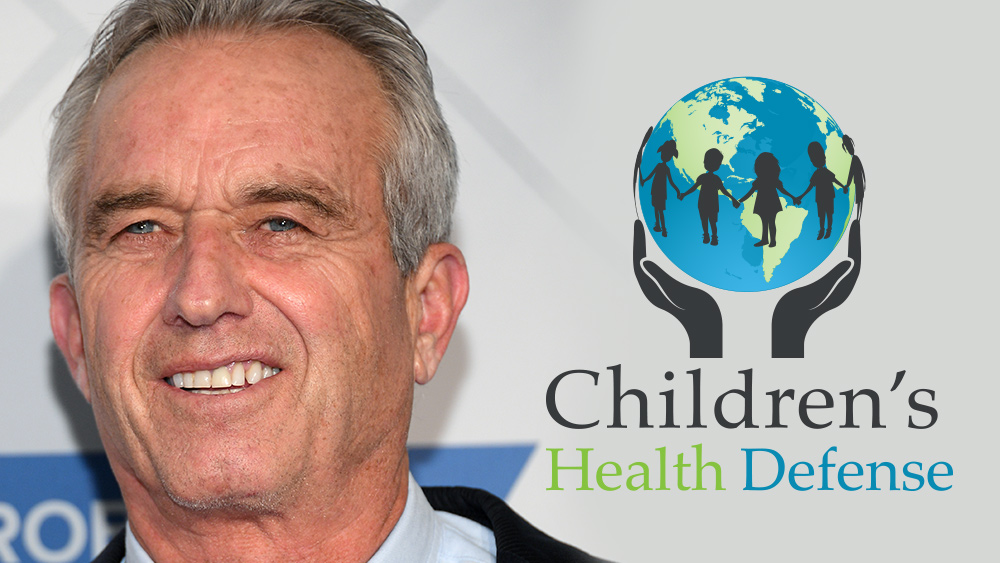An invisible danger: Coronavirus pandemic a threat to the mental health of Americans
09/15/2020 / By Zoey Sky

The Wuhan coronavirus continues to be one for the books, much like the anthrax attacks of 2001 or the financial crisis of 2008. However, these earlier crises that rocked the country were isolated, with one a national security crisis while the other was a financial crisis. These events were more limited in scope than this year’s pandemic — which is causing the “multicrisis instability” currently shaping American politics and culture.
While other events in the country unfolded throughout several years, the current global pandemic was further complicated by economic and social shutdowns, mass unemployment and violent riots — all happening within the same year, with certain events occurring within the span of only several months.
A new government report found the coronavirus pandemic — together with other events — has had an “invisible” effect on the mental health of the general public.
The mental burden of the pandemic
In late June, the Centers for Disease Control and Prevention (CDC) conducted an extensive mental health survey of Americans. The results, published in August, were shocking.
Researchers found proof of “elevated levels of symptoms of anxiety and depressive disorders, substance use and suicidal ideation” among adults in the country. The findings also identified populations at increased risk, such as young people, racial and ethnic minorities, essential workers and caregivers of elderly patients.
Over 40 percent of the respondents reported an adverse mental or behavioral health condition, while 11 percent said they seriously considered suicide in the last 30 days.
Nadine Kaslow, a professor of psychiatry at the Emory University School of Medicine, explained that it is crucial to fully understand the lasting effects of the pandemic and of “economic instability.”
As the study revealed, participants exhibiting symptoms of anxiety, depression, substance use, or suicidal ideations may also be experiencing issues with normal functioning. Those with extreme symptoms also require immediate help.
Mental health experts note that the study results may prove useful, but it also raised more questions.
As the survey revealed, more people are reporting symptoms of anxiety and depression. However, the prevalence of anxiety and depressive disorders is unclear. It’s possible that more people may be thinking about suicide, but it remains to be seen if suicidal ideation is causing more suicidal acts since national data on how the pandemic is impacting the suicide rate is lacking.
Experts shared that the data is valuable as it highlights the current condition of the country’s vulnerable populations.
Anna Mueller, a suicide researcher and professor of sociology at Indiana University Bloomington, said that the study points to how the pandemic “is taking a massive toll” on the mental health of American citizens.
These breakdowns also indicate how important factors such as economic stability and economic security are to a person’s well-being. Additionally, it shows how vulnerable populations, particularly in terms of socioeconomic status, those who are being put in harm’s way, are the ones bearing the brunt of the pandemic.
Coronavirus linked to increase in suicidal thoughts, substance abuse
The CDC study has also found that over 50 percent of essential workers reported at least one adverse mental or behavioral health symptom, while 22 percent reported suicidal thoughts.
Compared to nonessential workers, more essential workers experienced symptoms of COVID-related trauma and stressor-related disorder and increased substance use. The study clarified that essential workers include nurses, doctors, factory workers, hospital custodians and grocery store clerks.
Unfortunately, the majority of essential workers don’t have job security. They also constantly risk their health and the health of their families to receive their wages.
At least two-thirds of unpaid caregivers for adults reported at least one adverse mental or behavioral health symptom. About 33 percent of unpaid caregivers reported increased substance use compared to six percent of those who are getting paid. The results also found that 31 percent of unpaid caregivers reported suicidal ideation compared to three percent who were still receiving pay.
Data confirms that the elderly are among those at highest risk of dying or having serious complications from coronavirus. The CDC study also found that caregivers may struggle to find additional help, or may not feel safe using available help.
Bart Andrews, the chief clinical officer at Behavioral Health Response, said that the sense of “overwhelmingness is intense,” especially if caregivers have to deal with the added stress of the pandemic.
According to the study, 75 percent of young survey responders aged 18 to 24 reported at least one adverse mental health symptom or behavioral health symptom. Serious suicidal ideation was at an alarming 25 percent within the same group.
Uncertainty can also be a factor, particularly since it may be increasingly difficult to imagine life as it was and a future for those who survive the pandemic. (Related: Long coronavirus lockdowns causing people’s mental health to rapidly DETERIORATE.)
Stress and anxiety are normal, advise experts
Andrews warned that while distress signals shouldn’t be downplayed, pathologizing emotions can also be just as dangerous. It’s normal to feel stressed, anxious and depressed because of coronavirus.
He added that the universality of the pandemic can become a “protective factor.” People are distressed, but this distress may be mediated because it’s normalized.
Additionally, the COVID-19 pandemic also increases the risk for some and decreases the risk for others. But without proper and immediate intervention, the pandemic could potentially worsen existing disparities, which is why social safety nets are important for your overall well-being.
The CDC survey suggests that interventions, such as “strengthening economic supports to reduce financial strain, addressing stress from experienced racial discrimination, promoting social connectedness, and supporting persons at risk for suicide” are key to helping Americans survive the pandemic.
Kaslow added that access to affordable mental health services is also important, along with compassion. Whether you’re working from home, an essential worker, or currently unemployed, you may be feeling burnt out. But you need to reach out to family and friends to check on them.
Showing someone you care by calling them or messaging them can spell the difference between a horrible day and them having a more positive outlook on life despite the pandemic. And it’s good for you as well.
Why is the pandemic affecting mental health?
It remains to be seen how exactly the pandemic is affecting the mental health of the general public. According to Dr. Laurel Williams, chief of psychiatry at Texas Children’s Hospital, the rise of depression may be linked to “a lack of community.”
No matter where you look, people at home and even in public are constantly glued to their phone, TV or gadget screens.
If you can’t talk to other people, you may be unable to feel a sense of belonging, which can increase feelings of hopelessness because of the pandemic.
Sources include:
Tagged Under: Anxiety, China, coronavirus, covid-19, depression, Flu, infections, lockdown, lockdown anxiety, lockdowns, medical research, men's health, mental health, Mind, moods, outbreak, pandemic, quarantine, stress, superbugs, virus, women's health, Wuhan coronavirus





















